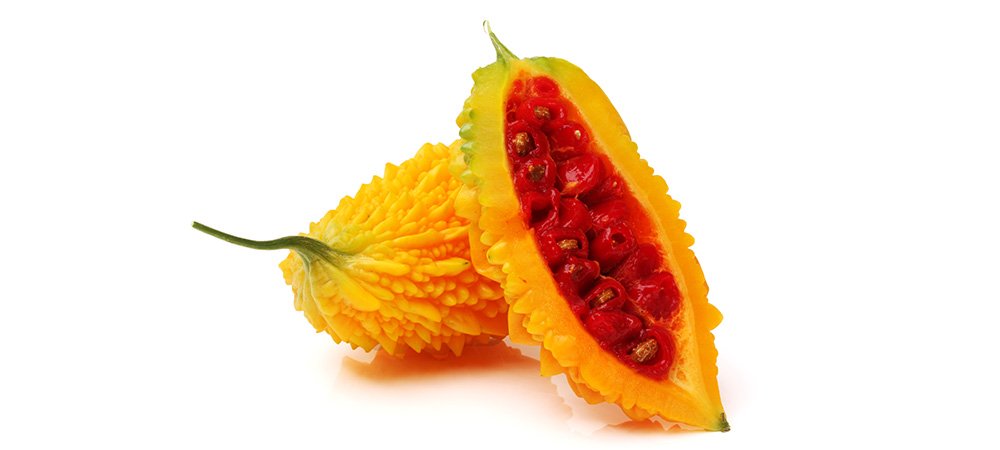Momordica charantia (Momordica charantia) is not only a traditional herbal remedy used in the past, but also a subject of current research. Thanks to its antioxidant capacity, metabolic regulatory effects and protective role on the immune system, Momordica charantia is a herbal carrier of holistic health that has been used from the past to the present and provides benefits in many functions.
Power Pomegranate (Bitter Melon) Description
The pomegranate, known as Momordica charantia, is a plant that grows in tropical and subtropical regions. Also colloquially referred to as "bitter melon" or "bitter gourd", it is generally known for its fruit, which has a bitter taste profile. This plant contains natural compounds that are thought to have many important health benefits. It is used in traditional medicine and consumed as food, especially in regions such as Asia, Africa and South America.
Power Pomegranate is known for its green, long and hairy fruits. This fruit has many health benefits thanks to its nutrients, vitamins and minerals. In particular, pomegranate stands out with its blood sugar control, antioxidant effects, immune system support, anti-inflammatory and neuroprotective properties. It is also known to have positive effects on stomach, intestinal health and liver health.
Power Pomegranate has also been suggested to show potential protective effects against some types of cancer and may combat post-exercise fatigue. All these properties make it popular as a natural health-promoting herb.
Health Effects of Power Pomegranate
Power Pomegranate is used in traditional medicine and modern research as a support for various diseases and conditions. Based on the articles provided, here are the potential uses of potassium pomegranate:
- Diabetes Power pomegranate can be used as a support in the treatment of diabetes with its blood sugar lowering effect.
- Obesity It may help in the treatment of obesity with its lipid profile improving effect.
- Infections Due to its antiviral and antibacterial properties, it can be used against various infections.
- Cancer: It has shown potential effects against various types of cancer.
- Depression and Anxiety: Antidepressant and anxiolytic effects have been observed.
- Wound Healing: It can accelerate the healing of diabetic wounds in particular.
- Liver Protection: Thanks to its antioxidant properties, it may have a protective effect on the liver.
- Immune System Support: It has immunomodulatory effects.
Scientific Statistics on Power Pomegranate
Bitter melon has been extensively studied for its potential supportive benefits, especially in the context of diabetes and metabolic disorders. Here are some key scientific statistics on bitter melon:
- Blood Sugar Lowering Effect:
Bitter melon has the ability to significantly lower blood sugar. In one study, daily consumption of a certain dose of bitter melon in newly diagnosed type 2 diabetes patients resulted in a significant reduction in fructosamine levels, but this effect was not as strong as a diabetes drug. - Insulin Secretion and Energy Production:
Bitter melon fruit extract has the ability to increase insulin secretion in the pancreas and increase intracellular ATP production. This effect was realized both in the pancreatic cells of the animals and improved glucose tolerance in the given animals. - Oil Profile Optimization:
A systematic review of randomized controlled trials and another similar study showed that consumption of bitter melon reduced total cholesterol by an average of 9.71 mg/dL and triglycerides (TG) by an average of 10.24 mg/dL. No significant effect on other cholesterol levels was found. - Anti-Inflammatory and Antioxidant Properties:
Bitter melon has the ability to reduce inflammatory chemical markers NF-κB, IL-6 and TNF-α and increase antioxidant responses. This indicates its potential to reduce inflammation and oxidative stress. - Mechanisms of Action:
It is emphasized that bitter melon may exert its anti-diabetic effects through a variety of pathways, such as regulation of multiple genetic signaling pathways and specific enzyme activities in the pancreas organ and positive effects on the gut microbiota.
Bibliography:
- Jana Rudá-Kučerová, Hana Kotolová, & David Koupý (2015). [Effectiveness of phytotherapy in supportive treatment of type 2 diabetes mellitus III. Momordica (Momordica charantia)]. Ceska a Slovenska farmacie : casopis Ceske farmaceutickicke spolecnosti a Slovenske farmaceuticke spolecnosti. https://pubmed.ncbi.nlm.nih.gov/26459126/
- Shuzhen Wang, Zhiliang Li, Guliang Yang, Chi-Tang Ho, & Shiming Li (2017). Momordica charantia: a popular health-promoting vegetable with multifunctionality. Food & function. https://pubmed.ncbi.nlm.nih.gov/28474032/
- Sheng-Che Hung, Chung-Jung Lin, Wan-Yuo Guo, Feng-Chi Chang, Chao-Bao Luo, Michael Mu-Huo Teng, & Cheng-Yen Chang (2013). Momordica charantia: a popular health-promoting vegetable with multifunctionality. BioMed research international. https://pubmed.ncbi.nlm.nih.gov/23762863/
- Fang Chen, Gangliang Huang, & Hualiang Huang (2021). Preparation, analysis, antioxidant activities in vivo of phosphorylated polysaccharide from Momordica charantia. Carbohydrate polymers. https://pubmed.ncbi.nlm.nih.gov/33183626/
- Seyed Mohammad Hosein Hosseini Adarmanabadi, Orod Jalali Khalil Abadi, Amirhossein Amiri, Rozhina Tamannaeifar, Sahar Balanian, Mehdi Rasekhjam, Mohammad Sadra Samiazar, Sara Hasanpour, Samira Peiravi, Dorsa Alijanzadeh, Mohadeseh Poudineh, Hamidreza Amiri, Seyed Amirhossein Mazhari, Reza Khademi, Niloofar Deravi, & Mobina Fathi (2024). Pharmacotherapeutic Potential of Bitter Gourd (Momordica charantia) in Age-related Neurological Diseases. Journal of integrative neuroscience. https://pubmed.ncbi.nlm.nih.gov/38682220/
- Prasad R Dandawate, Dharmalingam Subramaniam, Subhash B Padhye, & Shrikant Anant (2016). Bitter melon: a panacea for inflammation and cancer. Chinese journal of natural medicines. https://pubmed.ncbi.nlm.nih.gov/26968675/
- Cheow Peng Ooi, Zaitun Yassin, & Tengku-Aizan Hamid (2010). Momordica charantia for type 2 diabetes mellitus. The Cochrane database of systematic reviews. https://pubmed.ncbi.nlm.nih.gov/20166099/

